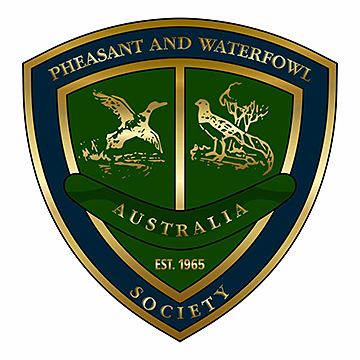 | supporting aviculture since 1965. |
Black-breasted Button-quail
Turnix melanogaster
Description The Black-breasted Button-quail is a large plump pale eyed quail with the cock bird measuring about 19cm long. The females weighs approx. 50% more than the cock bird. Black-breasted Button-quail are larger than the related Painted Button-quail. Cock birds have finely patterned backs and wings with brown, black, grey and white mottling. The face and throat is pale and the breast is black with many small crescent shaped markings. Female are similar except for having a black face and throat, a larger dark area over the upper and lower breast and heavier white crescent shaped markings on the breast. The bill is grey and the Legs are pale yellow and grey bill. Immature birds appear like males but duller in coloration Females are territorial and aggressive toward other females Distribution The Black-breasted Button-quail is endemic to eastern Australia’s coastal and near-coastal regions of SE QLD and NE NSW. The main populations occur within SE QLD where they are listed as vulnerable. In NSW they are listed as critically endangered. Early records show the birds were distributed from Rockhampton to Grafton Population Information The bird’s future is threated in the wild due to loss of suitable habitat and population fragmentation. Ground-foraging behavior makes the species susceptible to predation by native and introduced predators. The cryptic shy nature and rarity of the species means there is little reliable information on the bird. Habitat The Black-breasted Button-quail frequents dry rain forests, prefer drier low closed forests, particularly semi-evergreen vine thicket, Black-breasted Button-quail may also be found, in littoral habitat adjacent to coastal sand dunes A deep dense and extensive leaf-litter layer is required for foraging. The species is recorded vine forest remnants between Hoop Pine plantations Life Cycle The species is ground-dwelling and feeding behavior makes the species susceptible to predation. Nesting Three to five eggs are laid however 4 eggs form the usual clutch. The nest is comprised of a shallow scrape in the ground, lined with leaves, grass and plant fiber. Nests are a hooded dome shape and are built beside a structure for concealment. Incubation period is recorded as 18-21 days, however, captive birds have hatched chicks in 14-16 days. Hens are territorial related to other hens and their territory overlap several male’s territories. Hens are polyandrous seeking a cock bird to fertilise a clutch of eggs which are laid in the nest constructed by the cock bird. On completion of the clutch laying, the hen departs, seeking a new partner to repeat the process. The cock bird solely incubates and rears the chick with no participation from the hen. Hens mate with several males in succession laying multiple clutches Feeding Diet consists of small ground dwelling invertebrates, taken from litter on the forest floor. Seeds are also taken. Prey items include spiders, ants, centipedes, millipedes, beetles and land snails. Foraging involves digging in leaf litter with their feet and pivoting in a circular fashion before moving onto a new location. The birds create shallow circular platelets in the leaf litter whilst foraging. Black-breasted Button-quail are shy, inconspicuous and very cryptic. Birds are generally observed as they flush or walk away after being disturbed. They may be detected by scratching noises made when foraging in the leaf litter. Platelets indicate presence of birds. Black-breasted Button-quail in Captivity. Black-breasted button quail are a truly fascinating species which can only be kept under licence. As hens are the dominant bird they should always be introduced to an established cock bird. This action ensures he is able to avoid the initial onslaught of enthusiasm from the hen. The birds settle quickly (generally 10 to 15 minutes) and the hen will then commence laying when conditions are suitable. “Suitable” includes summer time frame, (ideally significant rainfall being a trigger) including availability of appropriate live food. Although Black-breasted button quail can be maintained on a seed diet, live food is essential for raising chicks. On completion of laying of the clutch, it is advisable to remove the hen as she will harass the brooding cock to desert the eggs to mate and lay a subsequent clutch. The hen can be introduced to a fresh established cock and she will lay a new clutch often within 1 to 2 weeks. One hen may produce up to five clutches in a season if sufficient cock birds are available. Hens should not be left with a brooding cock as they will generally attack the chicks on hatching so that she can mate and produce another clutch. The presence of mice is generally a cause for failure as mice activity at night is likely to cause the cock bird to vacate the clutch and not return in the darkness. Standard drinking containers need to be removed prior to chicks hatching and small shallow containers covered with small pebbles introduced to prevent drowning of the chicks. Live food (Termites, bush fly larvae or mini-meal worms) should be fed three times a day to a cock bird raising chicks. The young are beak fed by the cock bird. Hand raising of chicks after incubating eggs it is extremely difficult and rarely successful. Text and photography by John Urane |
